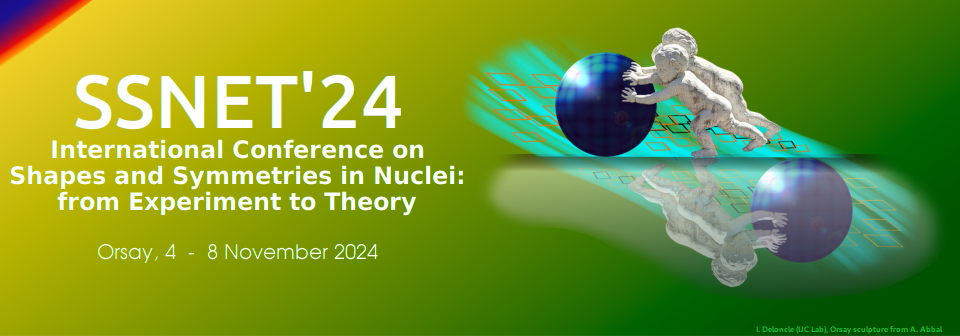Orateur
Description
The well-explored A~190 Hf-Ta-W nuclei near the valley of stability feature robust axially symmetric prolate shapes and associated high-K isomerism. The very-neutron-rich isotopes of these elements are far less explored experimentally as they cannot be accessed via fusion-evaporation or neutron-transfer reactions, and varying predictions of prolate-to-oblate shape transitions in different theoretical models remain untested. To access this neutron-rich region, a 198Pt primary beam at NSCL was fragmented for the first time, populating a wide palette of isotopes in high-spin metastable states. Following momentum-analysis by the A1900 fragment separator over a ~400 ns flight path, the isotopes were implanted in a Si detector stack surrounded by the GRETINA array to detect delayed gamma rays correlated with the implants. A range of new as well as previously observed isomers, with half-lives from a few hundred ns to few hundred μs, were populated in 72

